What is this habitat like?
Primary succession can happen when bare sand is colonised by plants. Over time, the sand builds up into sand dunes, raising the ground above the height of sea level. Succession in sand dunes is sometimes called a psammosere.
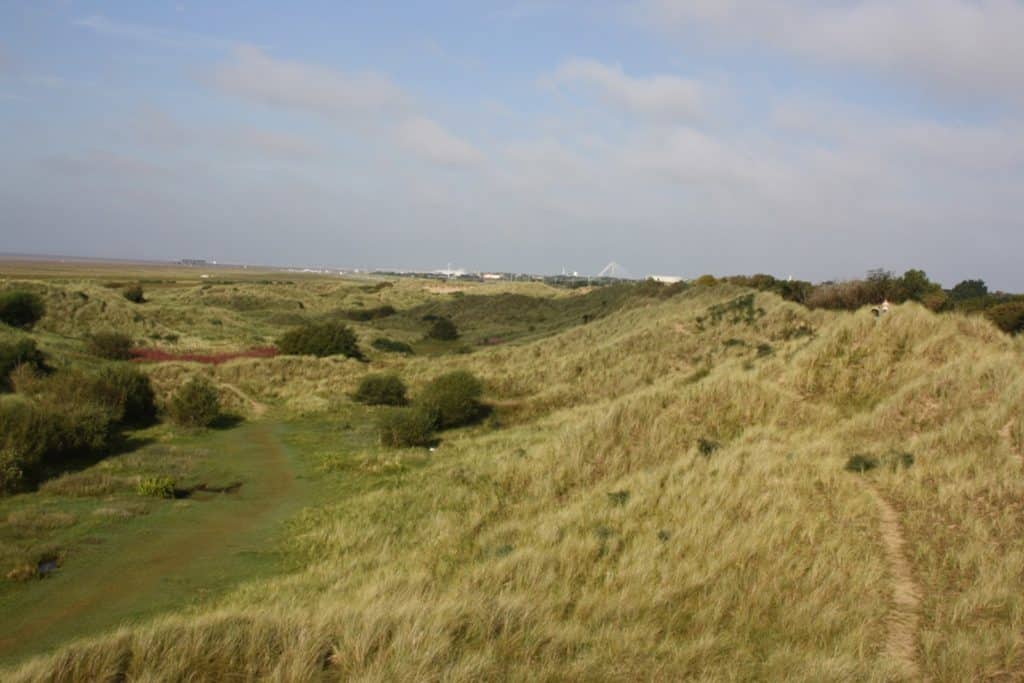
During the development of fixed dunes, younger embryo dunes are continually forming at the base of the dune system. As a result the dune system is advancing seaward.
Although succession takes place over time, different parts of a sand dune system can be taken to represent different stages of succession. If, for example, the sand dunes are advancing towards the sea at 1 metre per year, this means that the dunes at 100 metres inland will have been out of the water for 100 years. Of course, this assumes that the sand dunes are advancing at a constant rate, which may be contradicted by historical evidence.
Read more about the succession in sand dunes, or read on for investigation questions.
What questions do biologists ask?
You can ask many scientific questions about the sand dune environment. Here are some examples.
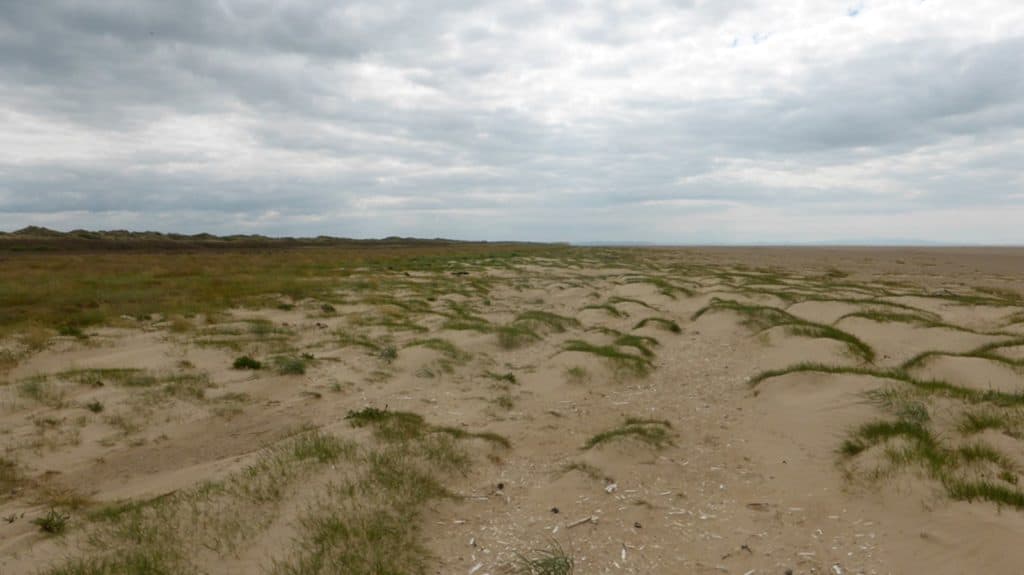
- How many different plant species can be seen?
- What are the key features of the dominant plant species?
- What adaptations do plants have to help them survive in this environment?

- How well does the soil here provide plants with what they need?
- How does the microclimate affect the growth of plants here?
- Is biodiversity highest at this seral stage?
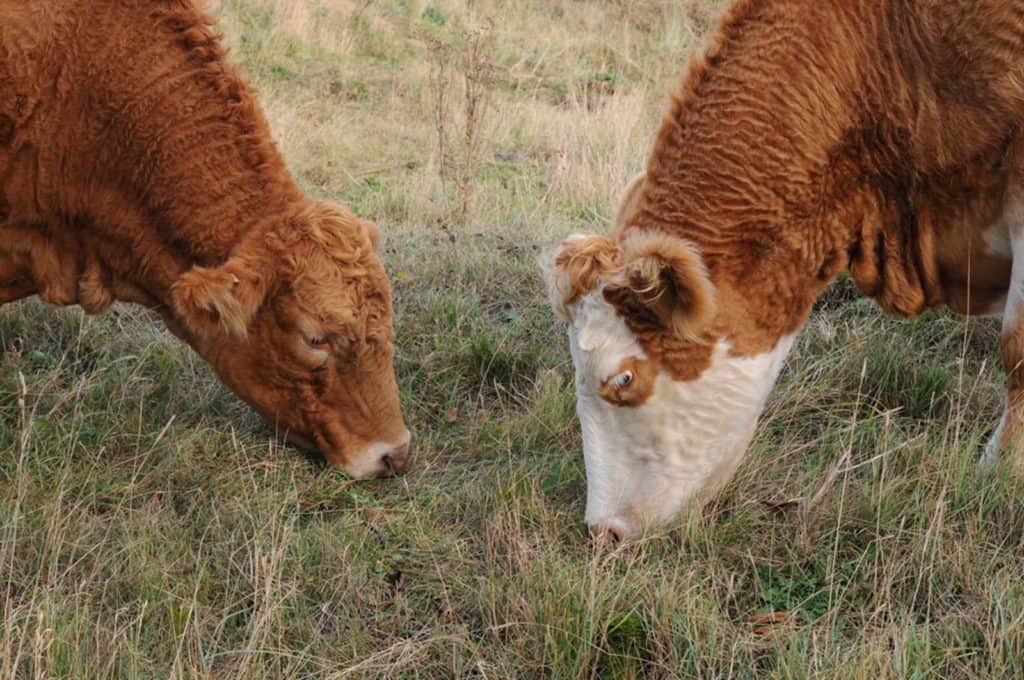
- How does grazing affect plants?
- What is the impact of grazing on ecological succession?
- Why is grazing useful for conservation?
What questions could you investigate with fieldwork?
Here are some examples. Each research question has been split into 2 or 3 sub-questions.
| Research question | Sub questions |
|---|---|
| Is primary succession happening at place x? | Does the distribution and abundance of vegetation change with distance from the sea shore? How and why do abiotic factors change with distance from the sea shore? What evidence is there of different seral stages? |
| How and why does the vegetation vary between two places in the dunes? (e.g. seaward and landward faces of mobile dunes, dune ridge and adjacent dune slack, semi-fixed dunes compared to fixed dunes) | Does the distribution and abundance of vegetation change vary between the two places? How and why do abiotic factors vary? What adaptations do plants have in the two places? |
| What is the impact of human disturbance on the sand dunes at place y? (e.g. tree felling, grazing by livestock, footpath erosion) | Does the distribution and abundance of vegetation change/vary between a disturbed and an undisturbed place (e.g. grazed vs ungrazed fixed dunes)? How and why do abiotic factors vary? What evidence is there for deflected succession? |
Synoptic links
A good investigation will make links between different parts of the A-Level Biology specification. Here are some possible synoptic links for investigations into sand dunes.
| Synoptic link | Detail |
|---|---|
| Adaptation | r and K strategies – pioneers are r-selected while climax plants are more K-selected |
| Transpiration and gas exchange | Xerophytic adaptations of many sand dune plants – surface area to volume ratio, density and location of stomata |
| Nitrogen cycle | Legumes with nitrogen-fixing bacteria in root nodules, free-living nitrogen-fixing bacteria in soil e.g. Azotobacter, ammonification by fungi and bacteria |
| Carbon cycle | Role of decomposers and detritivores in soil formation |
| Trophic levels and energy transfer | Role of chemoautotrophs and saprotrophs in sand dune soil Primary productivity (NPP is highest before the climax community) |
| Photosynthesis | Limiting factors such as soil nitrogen |
| Conservation | Management of successsion for conservation, e.g. grazing |
Succession in sand dunes
Where does the sand come from?
Sand is made up of fragments of rock that have been ground down by the sea. It is sometimes deposited by the sea in flat, sheltered parts of the coastline, like bays. As the tides recede, the free-draining sand deposited on the shore begins to dry out.
There are many ways in which sand can migrate inland, including saltation, traction and suspension.
Example: Saltation
If the shore faces into the prevailing wind, the sand grains will be blown inland. Single grains take to the air and hop about 6 metres; they land and dislodge a couple more grains of sand, which in turn take to the air and do the same. The process of wind-blown grains of sand jumping up the beach is called saltation. Sometimes you can see a cloud of sand moving up the beach in this way.
Stage 1: Migration
The sand grains move inland until they meet some form of obstruction. This might be a pile of seaweed dumped high up the shore by the sea, a lump of driftwood, a fence, a pool or muddy, sticky ground. Alternatively, sand might settle in the still air behind a small hillock or similar. At the top of the beach there is often a line of detritus deposited by the waves, known as the strand line, which marks the highest point that the sea reaches.
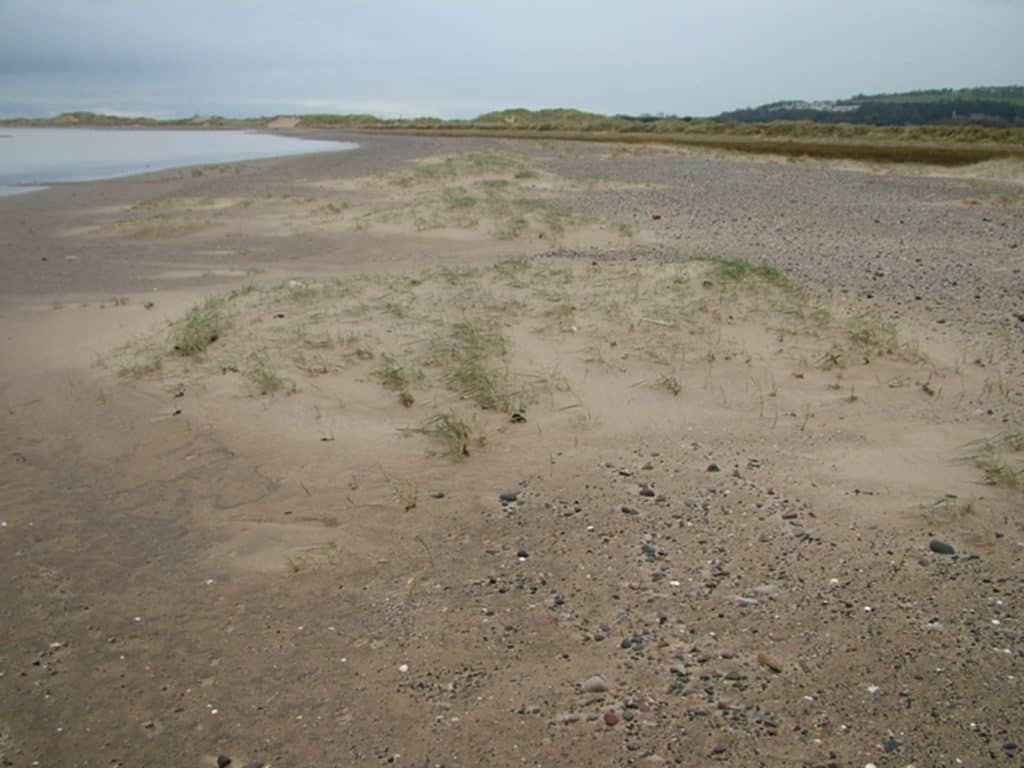
Sand grains moved by onshore winds can accumulate downwind of the strand line. Over time, a small embryo dune is formed. The embryo dune will grow if the rate at which soil is trapped is higher than the rate at which soil is blown away by the wind.
Stage 2: Colonisation
Plant seeds and spores are carried by the wind. Some of these land on the embryo dune, where they can germinate and develop. Colonisation means the growth of plants in a new place.
Physical conditions in embryo dunes are harsh. There is plenty of bare ground. The vegetation is described as “open”, as there is lots of open space between plants. Plants that are able to grow in these harsh conditions are specialised to their environment, and are called pioneer species.
Embryo dune pioneer plant species include: Sand Couch (Elytrigia juncea), Sea Sandwort (Honckenya peploides), Sea Rocket (Cakile maritima), Prickly Saltwort (Salsola kali), Sea Mayweed (Tripleurospermum maritimum) and Orache (Atriplex spp.).
Pioneer plants at the strand line are highly stress-tolerant. Many have a tough outer layer, protecting the rest of the plant from abrasive sand-laden winds. There is little water available for the roots, as sand has a low moisture-holding capacity. Plants here are adapted to conserve moisture. Salinity (salt level) is high. Some pioneers have succulent leaves and stems, which are designed to store water and tolerate salinity.
As the pioneer plants grow and die, sand continues to accumulate, which raises the ground surface above the level of the highest tides. The death and decay of pioneer plants adds organic matter to the bare sand and increases its water holding capacity. The next plant to arrive is marram grass. The extensive root system of marram grass traps more sand, building the ground surface into a ridge of mobile dunes (also known as yellow dunes). The growth of marram grass is stimulated by burial in sand.
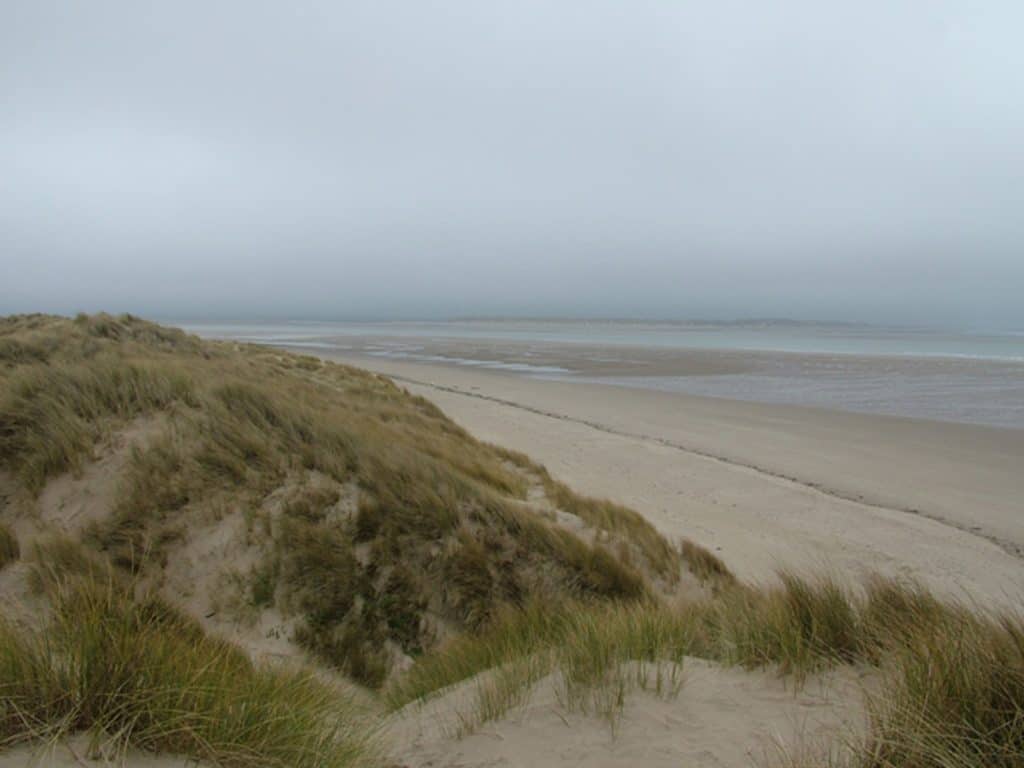
Stage 3: Establishment
Over time, the mobile dunes become less stressful for plants, as death and decay of vegetation continues to add organic matter to the soil. Vegetation cover becomes more continuous, with only a few small patches of bare sand, and this stage is called semi-fixed dunes. Tussocks of marram grass start to break up, as old marram growth is no longer being rejuvenated by burial in sand. Instead, a wider range of low-growing flowering plants are found.
Stage 4: Competition
The number of new species will be slowing down now. In fact the amount of free space is very limited and the chances are there will be few signs of bare sand. These are called fixed dunes.
The fixed vegetation surface prevents sand from moving as much as it did at the mobile dune stage.
Soil has become deeper, with a higher mositure content, higher humus content and lower pH.
The daily temperature range is smaller than in earlier stages. Where the sand is relatively alkaline (pH 6.0-7.5) because the sand contains a lot of shell material; the fixed dunes will be dominated by a continuous cover of grasses, sedges and low-growing flowering plants.
Where the sand is relatively acidic (pH 3.5-5.0), dune heathland may develop, with the arrival of woody shrubs such as heather and gorse.
In the development of the sand dune ecosystem, it is not uncommon for a dune slack to be created. This is when a blow-out (a damaged area of dune knocked back to bare sand by a combination of erosion and strong wind) takes the sand back below the level of the water table.
Dune slacks are variable in their nature. They will vary according to the frequency of inundation (which relates to the height of the blow-out floor relative to the summer/winter water table), the pH of the ground water and the substrate, the age of the slack, and the intensity of grazing.
If the dune slack is old enough then the community may develop to scrub, with willow (Salix spp.), and moisture loving associates such as Marsh Pennywort (Hydrocotyle vulgaris), Southern Marsh-orchid (Dactylorhiza praetermissa), and various rushes and sedges.
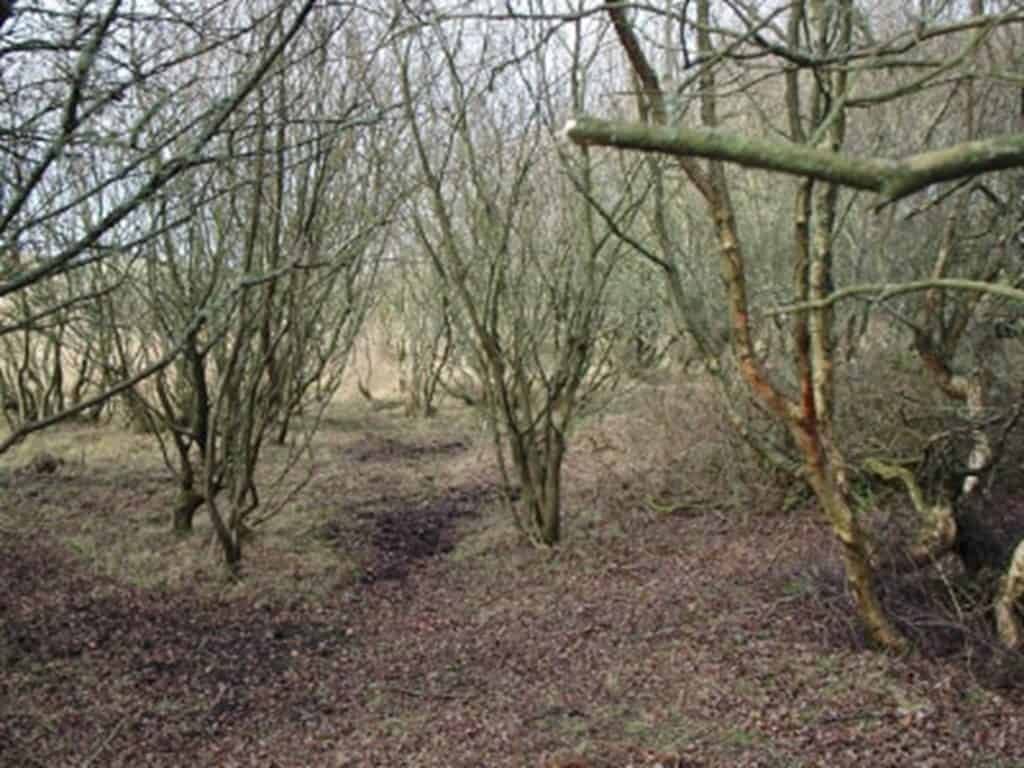
Stage 5: Stabilisation
The next seral stage is characterised by the colonisation of woody plants such as brambles, sea buckthorn and small trees. Over time, a thick, sometimes acidic layer of humus develops. In these acidic dunes, the collapse of old heather bushes may provide a place for young birch trees to grow. This is known as dune scrub.
Stage 6: Climax
Shading by taller vegetation means that woody species out-compete species from earlier seral stages, and so the resulting species diversity is lower. The climax vegetation of sand dune succession is deciduous woodland. No new species are added and the community remains the same over long periods of time (theoretically forever). The vegetation is said to be in equilibrium with the environment; a true state of balance has been achieved. The type of climax vegetation present is determined by many factors including:
- the climate of the area,
- wind speeds and direction,
- animal grazing and other management
- pH
- temperature

Secondary and Further Education Courses
Set your students up for success with our secondary school trips and courses. Offering excellent first hand experiences for your students, all linked to the curriculum.
Group Leader and Teacher Training
Centre-based and digital courses for teachers
Experiences for Young People
Do you enjoy the natural world and being outdoors? Opportunities for Young People aged 16-25.
